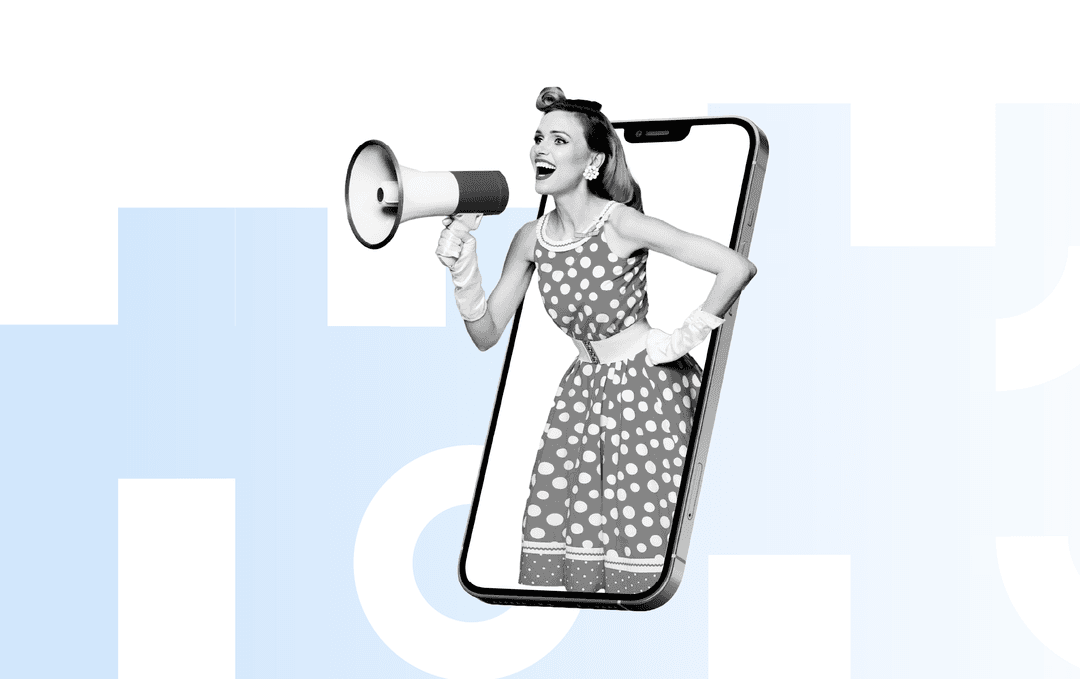Table of Contents
QUICK SUMMARY:
This opinion piece, written by a 25-year veteran in marketing and communications, explores how nostalgia marketing fosters emotional connections that strengthen brand affinity and loyalty. It breaks down why it works, when it fails, and how brands can leverage nostalgic feelings without losing relevance. Includes real-world examples from Coca-Cola, Crystal Pepsi, Adobe, and Nike.
You hear the first few notes of a song you haven’t thought about in years. Suddenly, you’re back in your childhood bedroom, taping posters to the wall and carefully organizing your CD, record, or cassette tape collection. That feeling—both grounding and emotional—is what makes nostalgia such a powerful force.
Brands know this. And lately, they’ve been leaning hard into it.
From flip phones making a fashion comeback to the Barbie movie lighting up theaters, nostalgic content is everywhere. But while nostalgia marketing can unlock real magic, it doesn’t always land. When misused, it can come off as lazy, pandering, or worse—out of touch.
So, why does nostalgia marketing work so well? When should brands lean into it—and when should they leave the past behind?
Let’s dig into the psychology, the best (and worst) nostalgia marketing campaign examples, and how brands can use memory as a bridge to something new.
Why nostalgia marketing works
Nostalgia is powerful because it’s personal. Successful campaigns draw from real moments—ones that have left a lasting mark. A favorite show, a shared snack, the logo on a childhood backpack. When those details resurface, they do more than jog a memory. They trigger a feeling.
That feeling builds connection. For brands, that emotional spark is a fast track to attention—and in many cases, loyalty.
Nostalgic memories carry built-in trust. They remind people of simpler times, familiar routines, and moments that felt safe. In marketing, those positive memories create a shortcut past skepticism. They can create a halo effect that makes a campaign feel warm, human, and worthy of attention.
Nostalgia also works across channels. A single pop culture reference can show up in an ad, a tweet, and a product launch—each one reaching the target audience in a slightly different way. When that reference hits the right cultural note, it sparks recognition. And recognition breeds affection.
However, fond memories don’t automatically equate to impact. It has to feel earned. People are quick to spot when brands are trying to borrow emotion though a nostalgia campaign without doing the work. That’s why the best nostalgia marketing doesn’t just include retro aesthetics—it connects the past to something relevant in the present.
It feels familiar, but fresh.
The rise of nostalgia marketing campaigns
The past few years have been a time of rapid change—technologically, culturally, and emotionally. That shift has left many people looking backward, not out of reluctance to move forward, but for something steady to hold onto. Brands have followed that instinct, resulting in a surge of nostalgia-driven marketing campaigns that tap into comfort, familiarity, and shared cultural touchpoints.
Take Stranger Things, for example. The series didn’t just lean into the 80s—it immersed its audience in it.
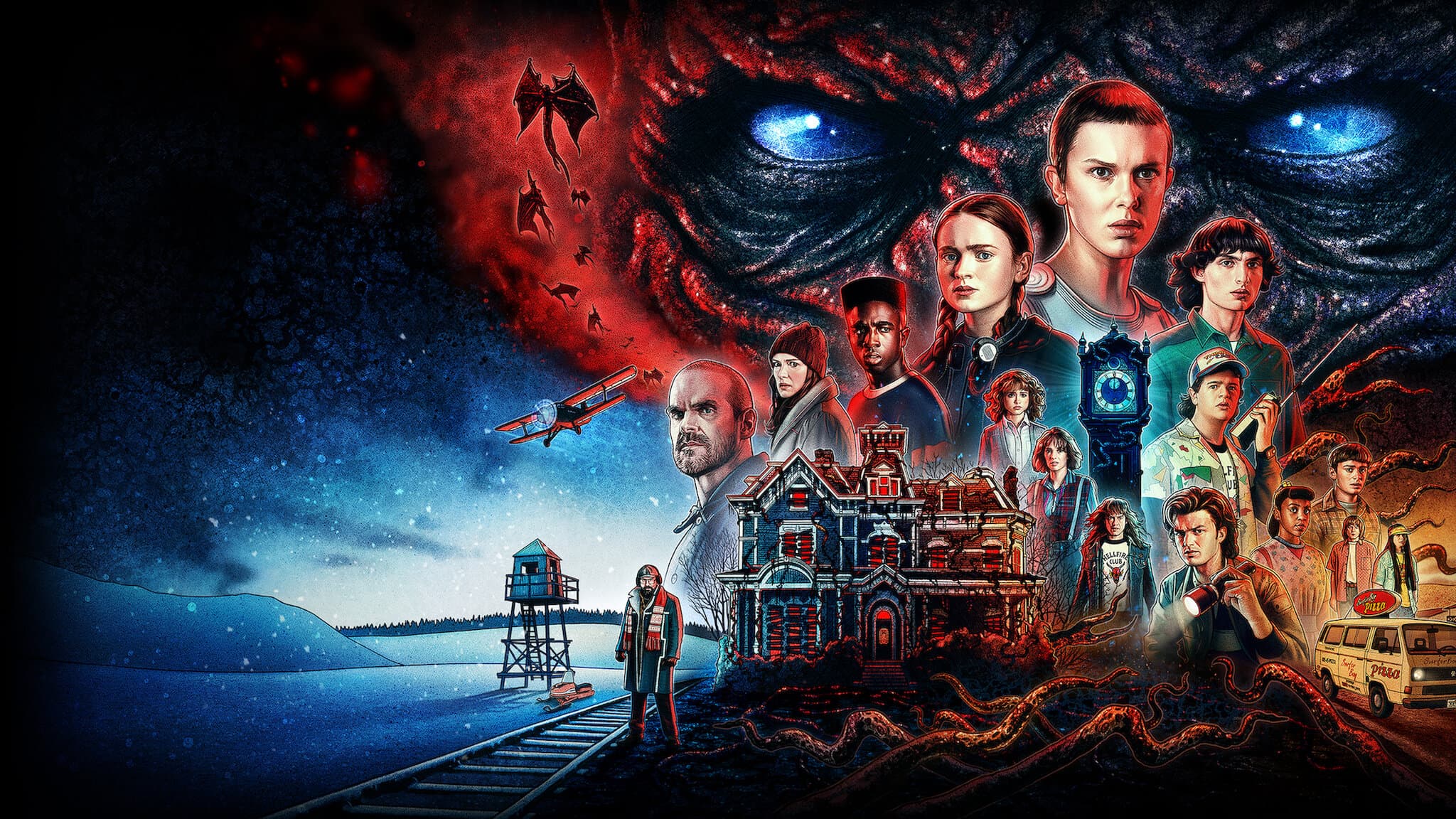
Image Source: Netflix
From analog phones and mall arcades to fashion choices and stylized fonts, every detail triggered nostalgic memories for older viewers and sparked curiosity in younger ones. Suddenly, brands had a playbook: mix authentic retro aesthetics with high production value and modern storytelling.
The Barbie movie pushed that strategy even further. While it celebrated a specific era of pop culture, it wasn’t stuck in that era. It is layered with modern references, cultural critiques, and bright visuals, designed for a new audience. Barbie wasn’t just revisiting her roots—she was reintroducing herself.

Image Source: Netflix
Fashion brands have also jumped in. Y2K styles have resurfaced, from low-rise jeans to butterfly clips. Lisa Frank prints are back on accessories. Flip phones made a comeback—not as practical devices, but as status symbols for a generation that grew up with touchscreens.
Each of these examples shows how nostalgia marketing taps into memory not just for attention, but to reframe the familiar in a new context.
The trend goes beyond aesthetics. There’s also been a return to tactile, analog experiences—vinyl records, physical photos, even handwritten notes. In a digital-first generation, these retro habits offer a kind of relief. They feel human. They feel real.
Behind all of this is a deeper driver: people want to feel grounded. As brands compete for space in noisy feeds and shifting algorithms, campaigns rooted in nostalgia offer something rare—emotion over novelty.
It’s the kind of sentiment that makes someone pause, smile, and remember where they were the first time they saw that logo, heard that jingle, or tore open that packaging.
By definition, nostalgia isn’t new—but its cultural impact has never been more visible. And the brands that are doing it well aren’t just revisiting the past. They’re reminding consumers why the past mattered in the first place.
Real-life examples of nostalgia marketing that worked
Some nostalgia marketing campaigns hit harder than others—not because they’re louder or flashier, but because they understand what made the original moment matter in the first place. Below are a few examples of nostalgia marketing that struck the right emotional chord, earning attention across multiple generations.
Coca-Cola’s retro branding and limited edition returns
Coca-Cola has long mastered the art of reminding consumers of its roots without getting stuck in them. One standout campaign revived its classic 90s-era branding for a limited run, featuring throwback packaging and vintage ad styles.
The campaign didn’t just reference the past—it utilized design, music, and even in-store placement to tap into specific eras of pop culture. You could even buy a retro-style Coca-Cola calendar, if you wanted to!
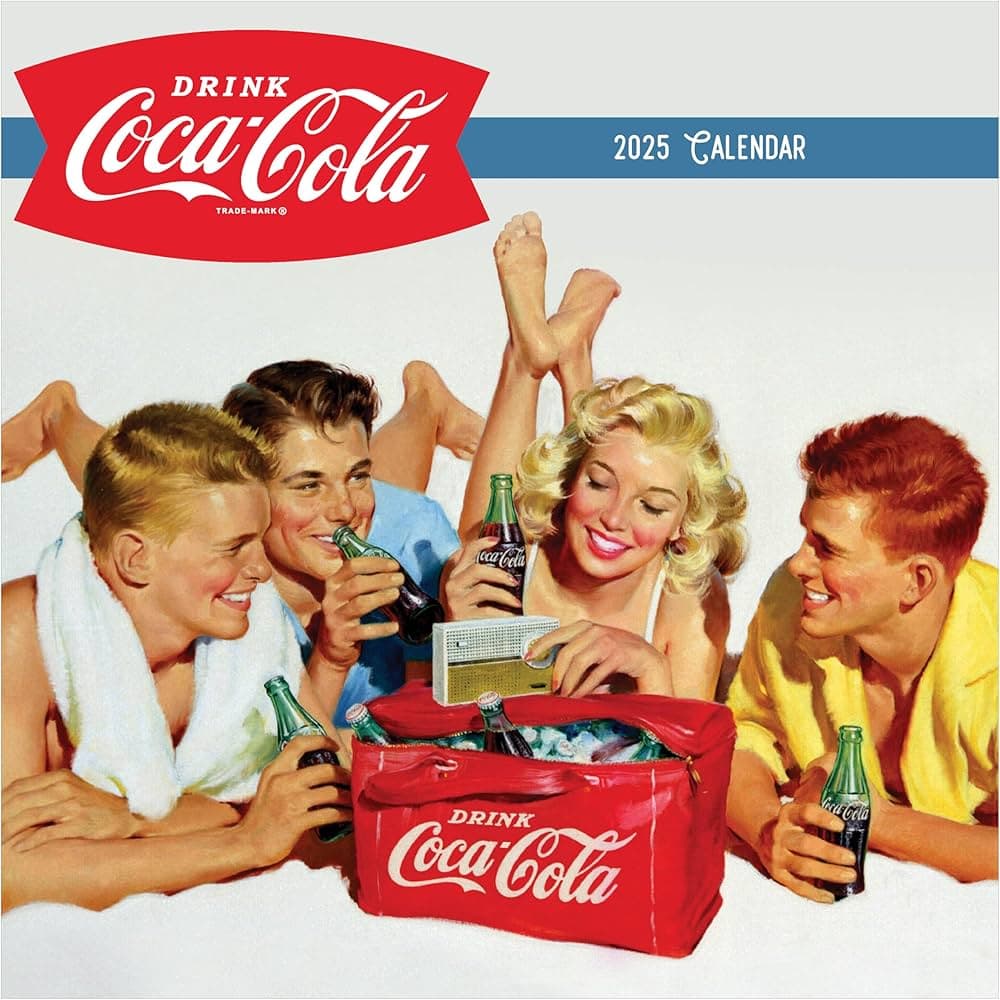
Image Source: Amazon
The key? It didn’t replace the current brand identity. It added depth to it. By acknowledging its history in a way that felt playful and intentional, Coca-Cola built a bridge between older generations and younger consumers discovering the brand for the first time.
Crystal Pepsi’s brief but brilliant reappearance
Initially launched in 1992, Crystal Pepsi may not have lasted long, but it left a lasting impression. So when Pepsi revived the product decades later, it wasn’t about relaunching a best-seller. It was about letting consumers feel nostalgia for a specific era: the early ‘90s, full of optimism, oddities, and marketing experiments.
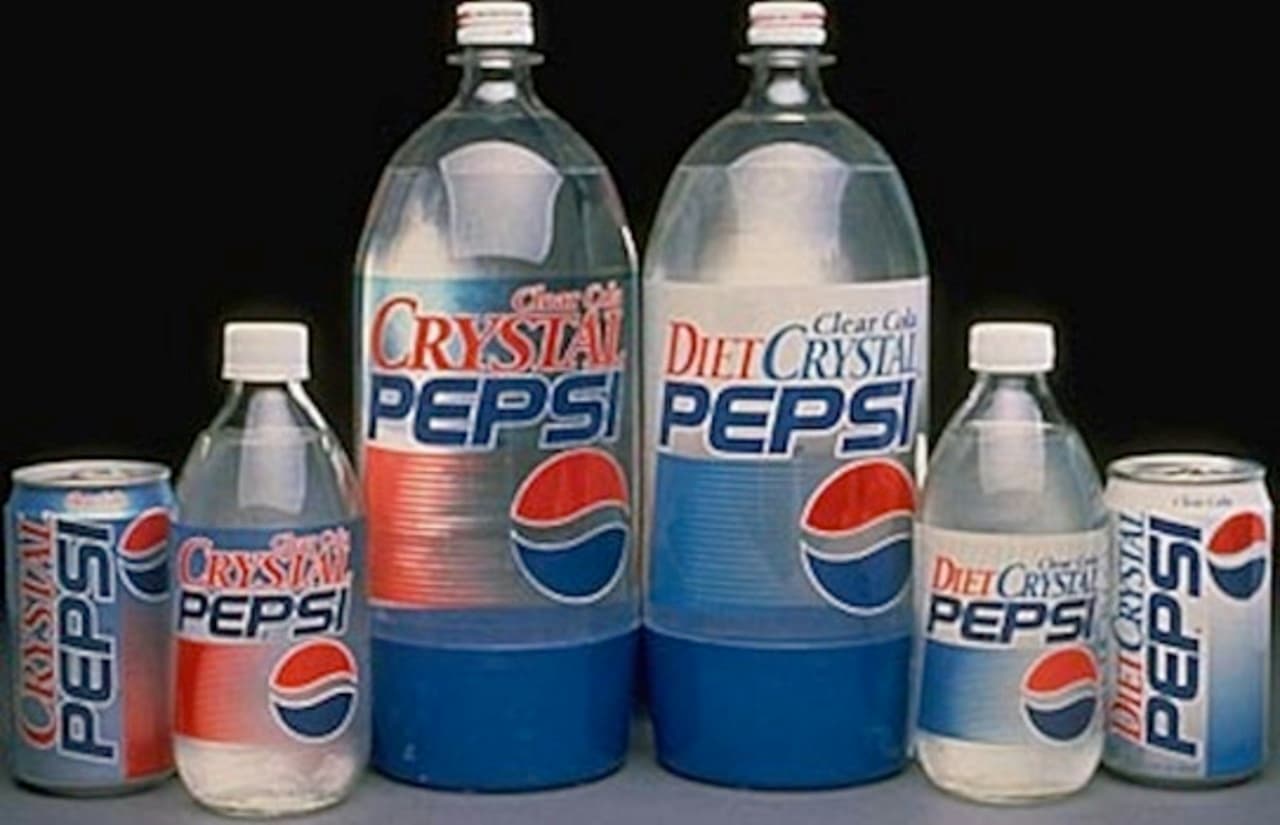
Image Source: Bustle
The campaign leaned into the retro absurdity, offering limited edition releases, old-school ads, and even fan-driven giveaways. It worked not because the drink was a hit, but because the experience of seeing it again brought back sentimental memories.
Sometimes, simply giving people the chance to say, “I remember that!” is enough to spark an emotional connection.
Nike’s retro sneaker drops
Nike’s approach to nostalgia is a lesson in knowing your audience. Each time they bring back a classic sneaker—like the Air Max 1 or the Cortez—it’s more than a product release. It’s a cultural event.
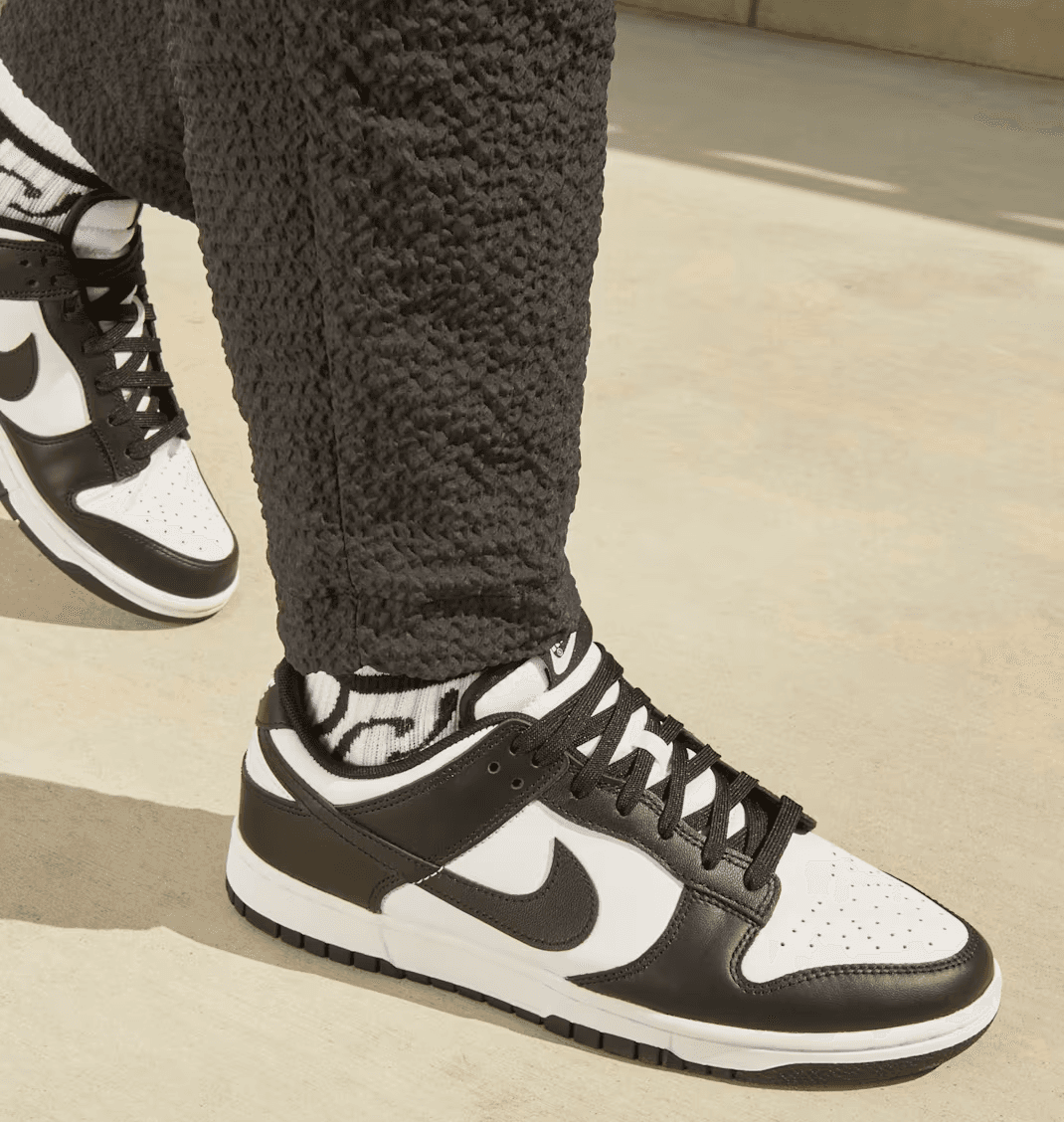
Image Source: Nike
These campaigns often pair updated color blocks with nostalgic elements from the original launches, including retro-style ads, nods to sports history, and reissued packaging that evokes the feeling of stepping into a time capsule.
By blending the familiar with the new, Nike effectively stirred childhood nostalgia while remaining modern and forward-thinking.
Adobe’s Photoshop Sketch meets analog creativity
Adobe is an excellent example of a tech brand using nostalgia without losing its edge. When it introduced Photoshop Sketch, the campaign leaned into visual callbacks to sketchbooks, flipbooks, and the kind of pencil drawings that sparked early creative impulses.
The message was clear: before digital tools came along, there was the spark—and Adobe wanted to help creators reconnect with it.
One standout element was a collaboration that brought Bob Ross—well, illustrator Chad Cameron as Bob Ross—into the digital age. Adobe created a series of tutorials and content that mimicked the soothing, low-fi vibe of The Joy of Painting, complete with gentle brushstrokes and friendly encouragement.
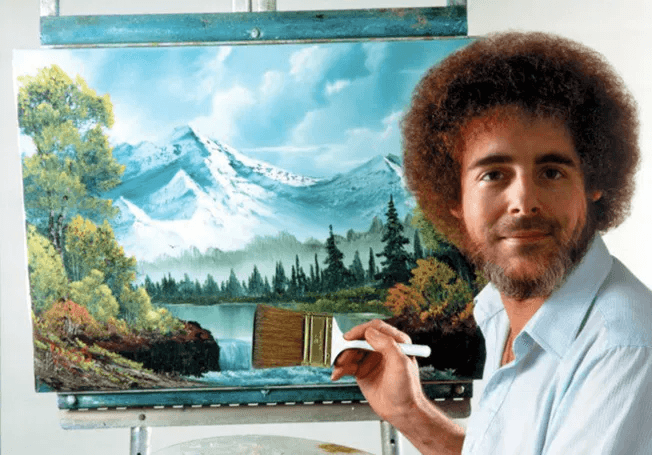
Image Source: AdWeek
It was a clever use of nostalgic content: lighthearted, emotionally warm, and deeply familiar for audiences who grew up watching Ross turn blank canvases into forests of happy little trees.
Lisa Frank’s resurgence through adult collaborations
Lisa Frank’s neon unicorns, rainbow leopards, and glitter-covered school supplies were once staples of elementary school pencil cases. Now? They’re back—on everything from makeup palettes to apparel collabs with fashion brands.
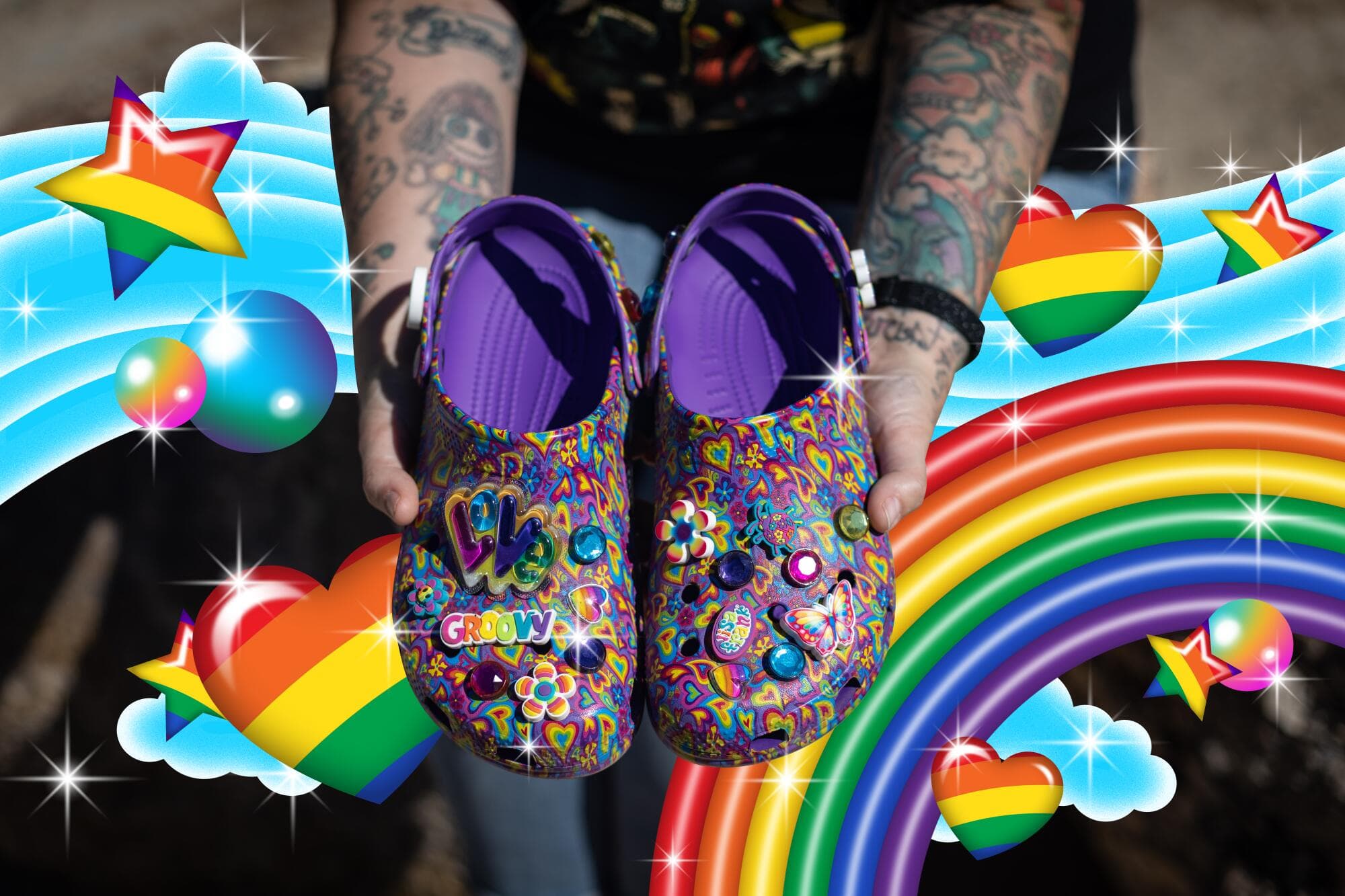
Image Source: Los Angeles Times
These nostalgic references resonate deeply with millennial audiences who grew up with Lisa Frank products. But they’re not just riding a trend. The brand’s strategy includes pairing its iconic visuals with high-quality, adult-targeted products that blend sentiment with function.
It’s a reminder that nostalgic elements can evolve to meet new audiences, new formats, and new expectations.
These campaigns worked because they didn’t just slap a vintage filter on an ad and call it a day. They understood the emotional context behind the imagery.
Whether through design, storytelling, or product development, each example leveraged nostalgia in a way that felt intentional, grounded, and human.
When leveraging nostalgia goes wrong
Nostalgia marketing can stir deep emotional connections—but when mishandled, it can backfire just as fast. A few misplaced references or a surface-level execution is all it takes to turn what should feel meaningful into something hollow or confusing.
One of the biggest missteps? Using nostalgic elements as a shortcut for substance. It’s easy to assume that a retro font or a familiar jingle will automatically resonate. But when those details aren’t tied to a clear story or emotional payoff, they come off as gimmicky. Worse, they can feel like a brand is trying too hard to cash in on something it doesn’t truly understand.
Another risk is over-targeting a specific era or age bracket without considering how it lands across multiple generations. A campaign built entirely around ‘80s arcade culture might strike a chord with Gen X—but it could alienate younger consumers if it doesn’t offer any cultural bridge.
Likewise, leaning too heavily on childhood nostalgia without a modern twist can feel outdated or irrelevant to audiences who weren’t there the first time around.
For example, Clippy—the annoying paperclip assistant from early Microsoft Office—was infamous for being more irritating than helpful.
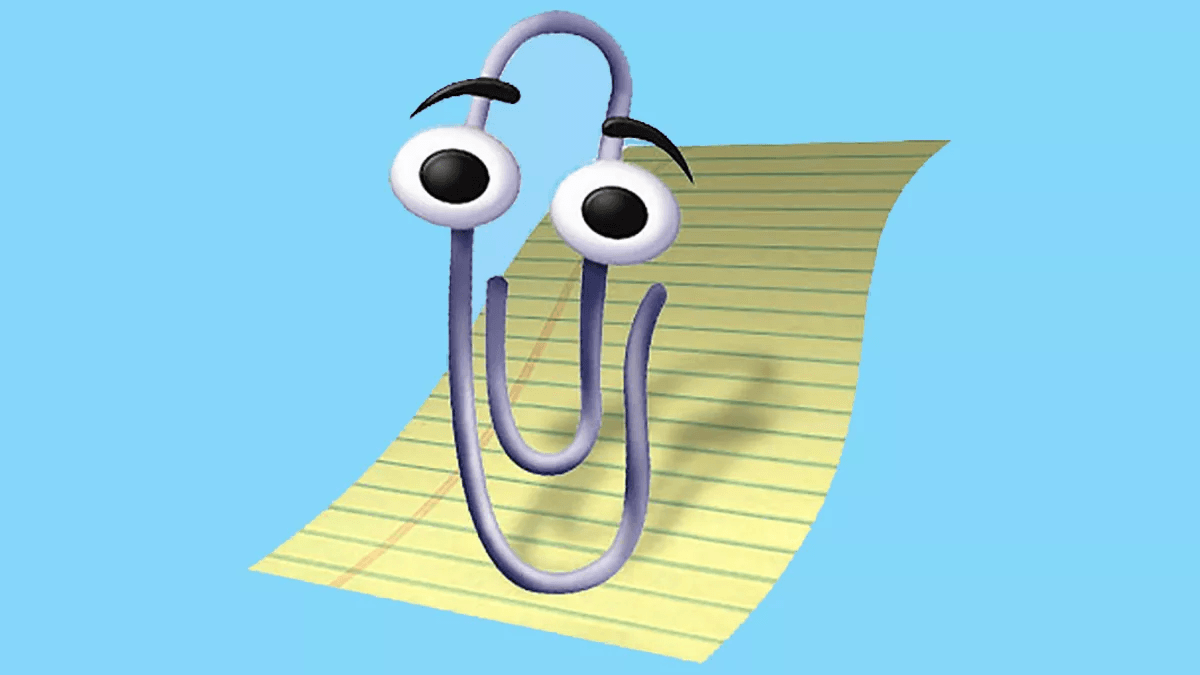
Image Source: Artsy
In 2021, Microsoft briefly revived Clippy as part of a Twitter campaign and an emoji redesign. The intention was playful and nostalgic, but the response was mixed.
Nostalgia without broader consideration for the cultural context is another pitfall. Campaigns that reference “simpler times” without acknowledging what those times were actually like for different communities can miss the mark entirely. Memory is personal, but it’s also political. Not every past experience is universal—or positive—and brands that ignore that nuance risk appearing out of touch.
And then there’s the issue of overuse. If every ad in a campaign relies on the same nostalgic hook, the effect wears off quickly. Nostalgia is powerful in small doses. When it’s overdone, it loses its meaning and starts to feel lazy.
For instance, in an attempt to revive its classic 1970s slogan, Burger King brought back “Have It Your Way” with retro-styled ads and a heavy dose of kitsch. But instead of feeling fresh or fun, the campaign came across as dated and confusing—especially for younger audiences unfamiliar with the original.
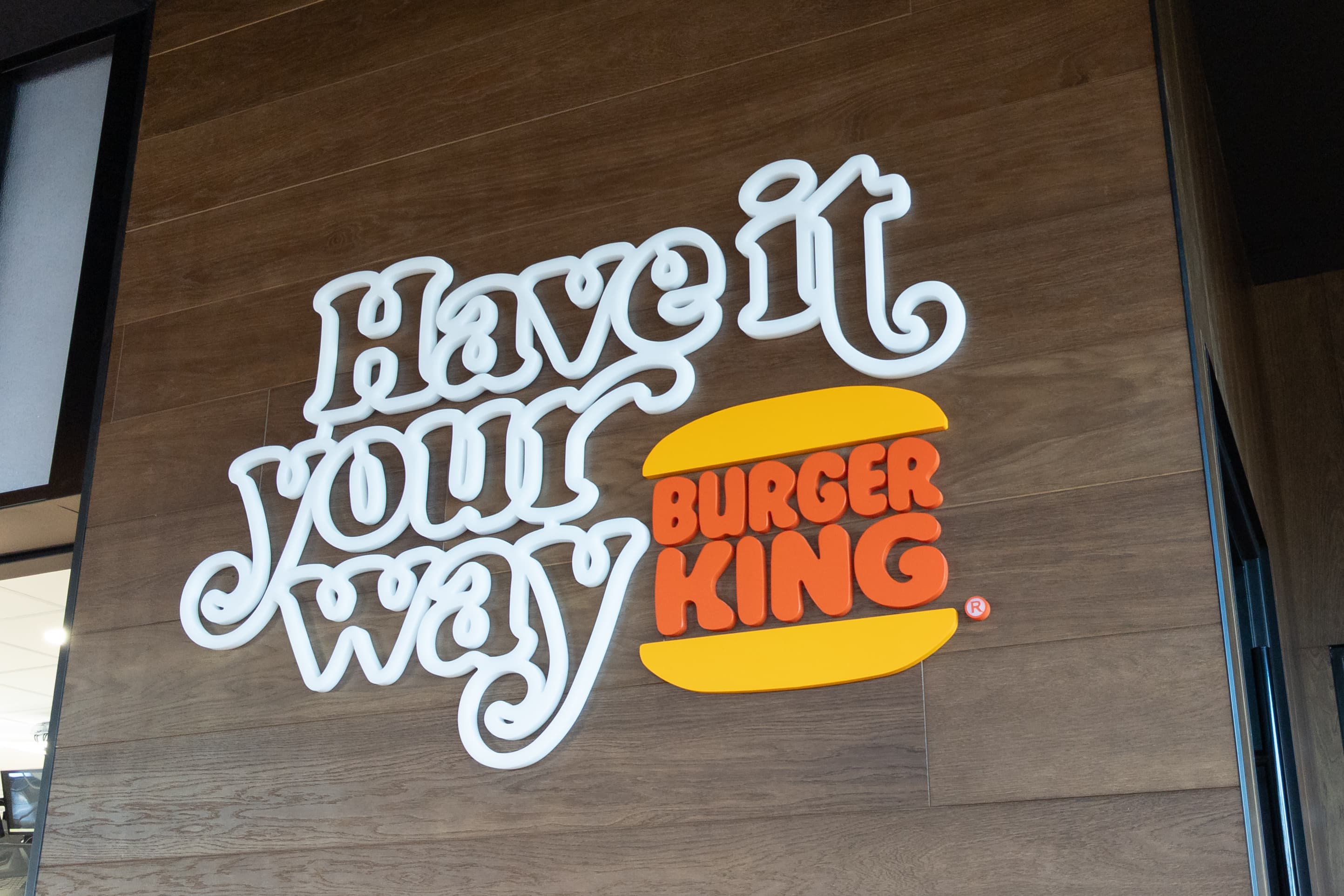
Ultimately, a nostalgia marketing strategy works best when it’s part of a broader concept—not the whole thing. It should support your message, not replace it. Brands that treat nostalgia as a trend rather than a tool often end up with campaigns that are all style, no substance.
How to build a nostalgia marketing strategy that resonates
Nostalgia can be a powerful storytelling tool—but only when it aligns with the audience, the message, and the brand’s identity. It’s not about tossing in a few retro visuals and calling it a day; successful nostalgia marketing starts with intention, empathy, and a clear understanding of who you’re trying to reach.
Here are four tips to put your nostalgia marketing campaign on the yellow brick road to success:
1. Start with your target audience’s memory lane
Not all nostalgia hits the same. Baby boomers may feel nostalgic about early Star Wars releases or the original Coke bottle design. At the same time, Millennial consumers may get that same feeling from flip phones or even early Instagram filters.
The key is identifying which cultural references, personal memories, or shared experiences are most likely to trigger nostalgic feelings in the audience. And that means doing the work: conducting audience research, creating personas, and understanding how different age groups relate to previous decades.
2. Balance the past with the present
In an increasingly digital society, a nostalgic campaign must offer more than just a callback. It's not enough just to evoke nostalgia—it must feel relevant now. The most effective nostalgia marketing tactics combine retro aesthetics or storytelling with a modern twist.
Think of a new logo that pulls visual cues from company history. Or a product re-release that pairs familiar branding with updated features or packaging. These moves don’t just tap into sentiment—they help position a brand as both grounded and forward-thinking. They say, 'We know where we came from. And we know where we’re going.’
3. Don’t just replicate—reimagine
Some brands incorporate nostalgia marketing by bringing back old products. Others succeed by reinterpreting emotional themes tied to personal or cultural moments. Take comfort food, for example—it often appears in nostalgic ads because it evokes feelings of safety, ritual, and family. But you don’t need to sell snacks to evoke that feeling. The emotional bond is what matters.
When you reimagine nostalgia through your brand’s lens, you create something that feels familiar and fresh. And that’s where lasting impact happens.
4. Use nostalgia to deepen—not replace—a brand story
The best nostalgia marketing doesn’t distract from the message. It enhances it. It reminds people why the brand matters by tying it to shared memories or emotions they already care about.
That’s why nostalgia marketing is important—not because it makes people look backward or evoke positive emotions, but because it helps them feel connected. It can boost brand loyalty by reinforcing existing emotional connections or creating new ones that feel deeply personal.
Just make sure the message doesn’t end when the ad ends. Nostalgia should be part of a broader strategy that supports the brand’s positioning, values, and voice in the market.
Nostalgia marketing is powerful—but it’s not a strategy on its own
Nostalgia marketing works because it feels personal. It brings back familiar sounds, colors, cultural memories, moments, and emotions that remind people who they were—and who they still are. When used with care, it builds brand loyalty, creates an emotional bond, and makes even modern campaigns feel timeless.
But nostalgia can’t do the work alone. It only resonates when it’s grounded in relevance, when it speaks to a clear target audience, and when it supports something meaningful in the present.
The brands that get it right don’t live in the past. They walk memory lane with intention—and invite their audience to come along.
They make us feel nostalgic, yes. But more importantly, they help us feel connected. And that connection is what makes people care—long after the campaign is over.

Written by
Paul Stainton is a digital marketing leader with extensive experience creating brand value through digital transformation, eCommerce strategies, brand strategy, and go-to-market execution.
Read more posts by Paul StaintonSee how 7,000+ marketing agencies help clients win
Free 14-day trial. No credit card required.



